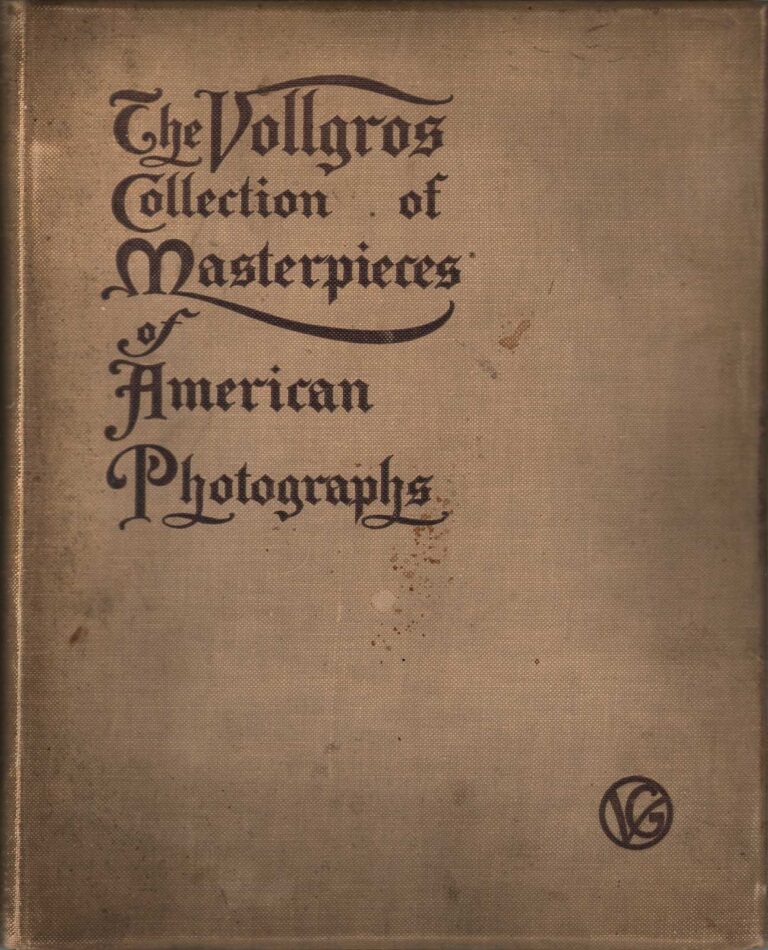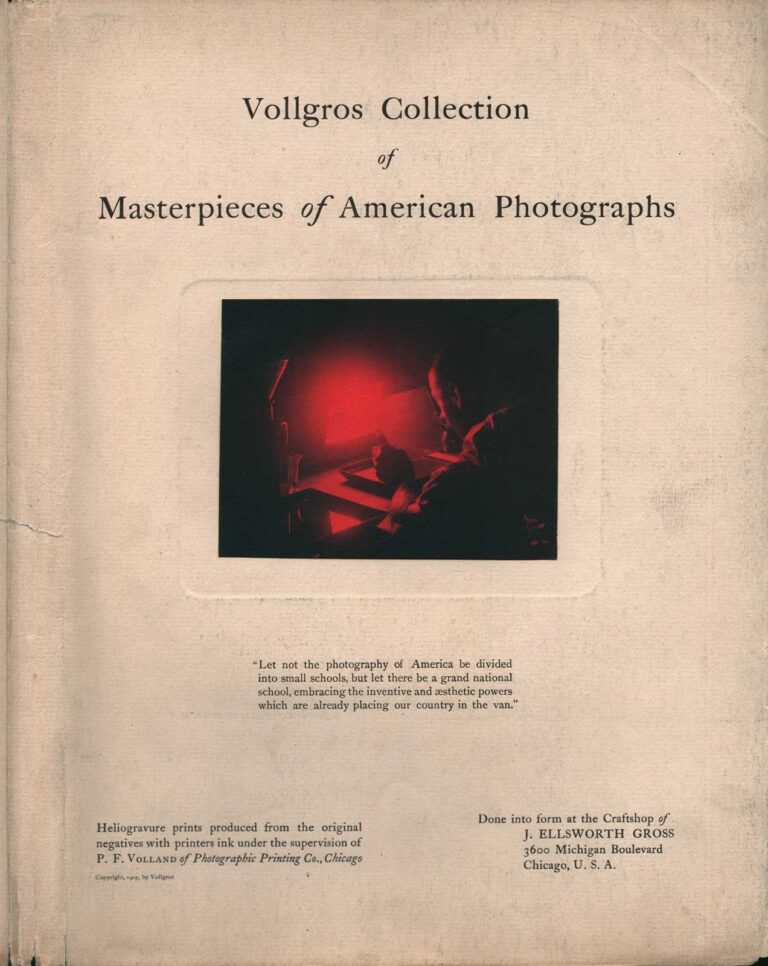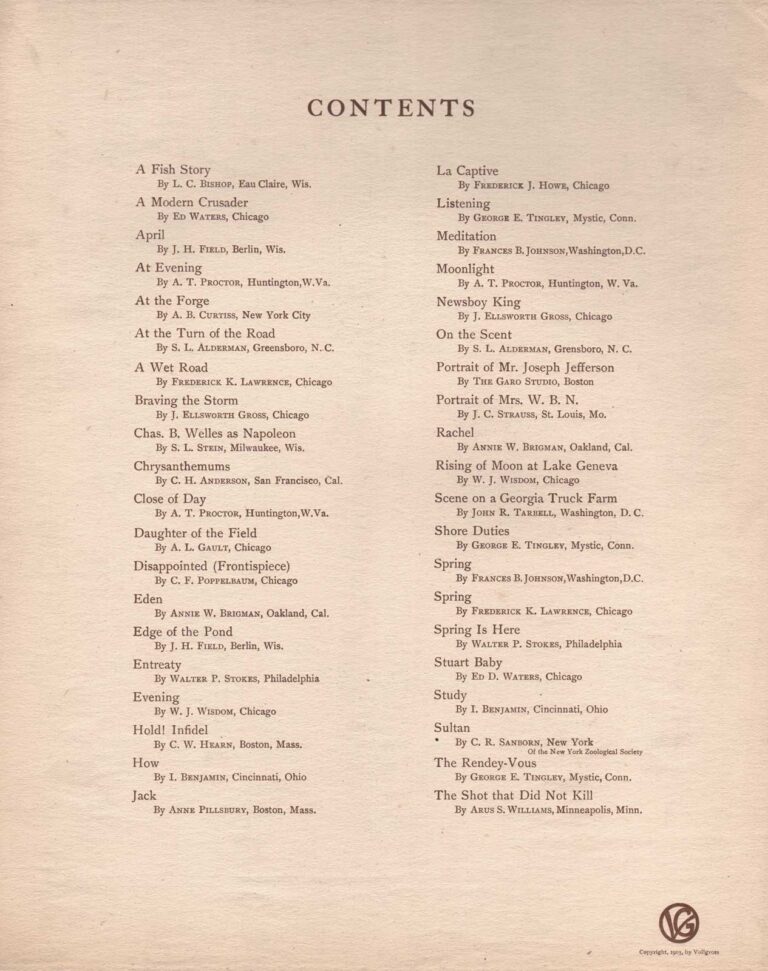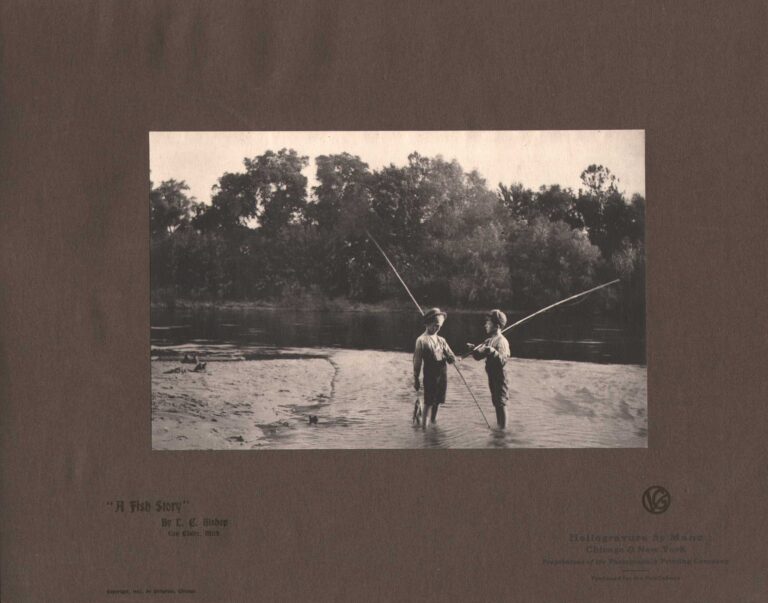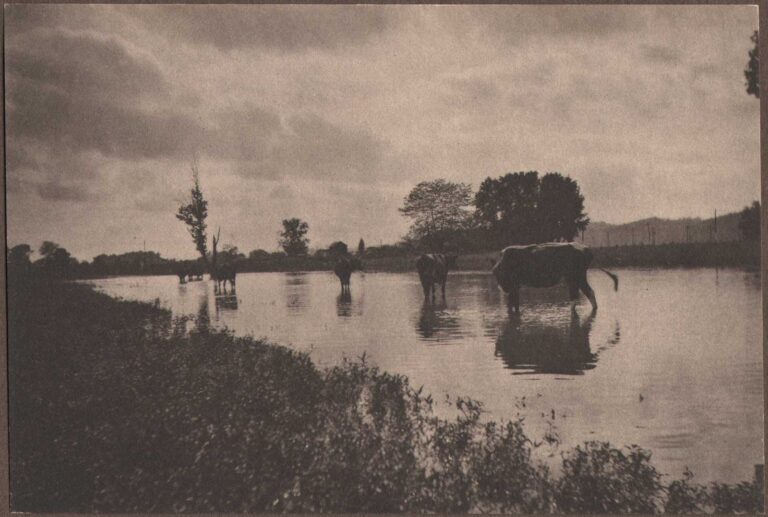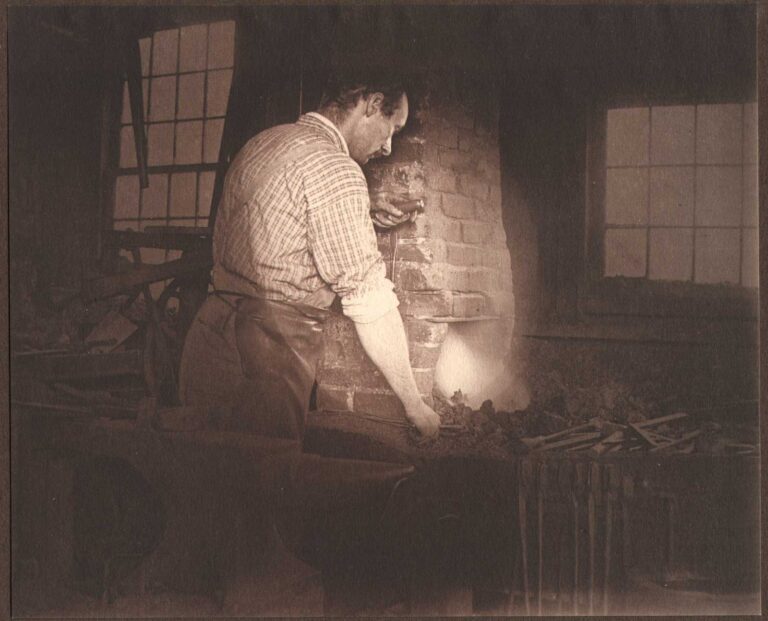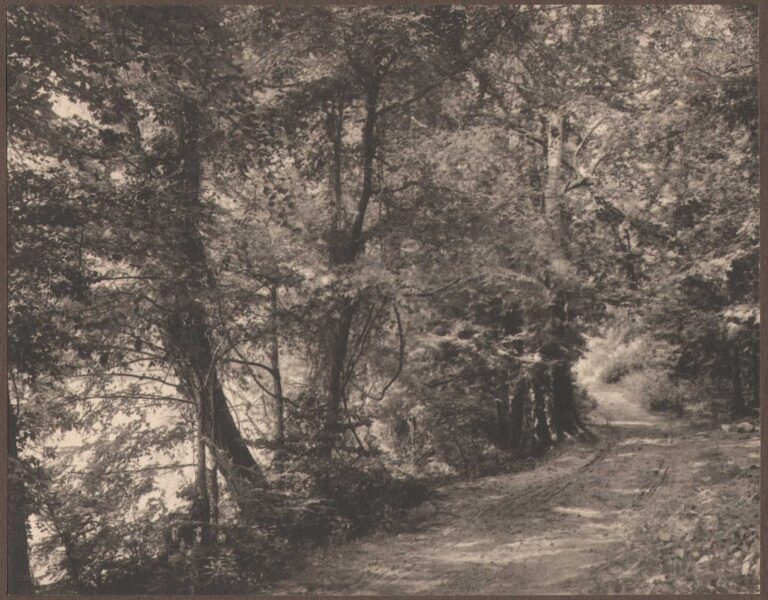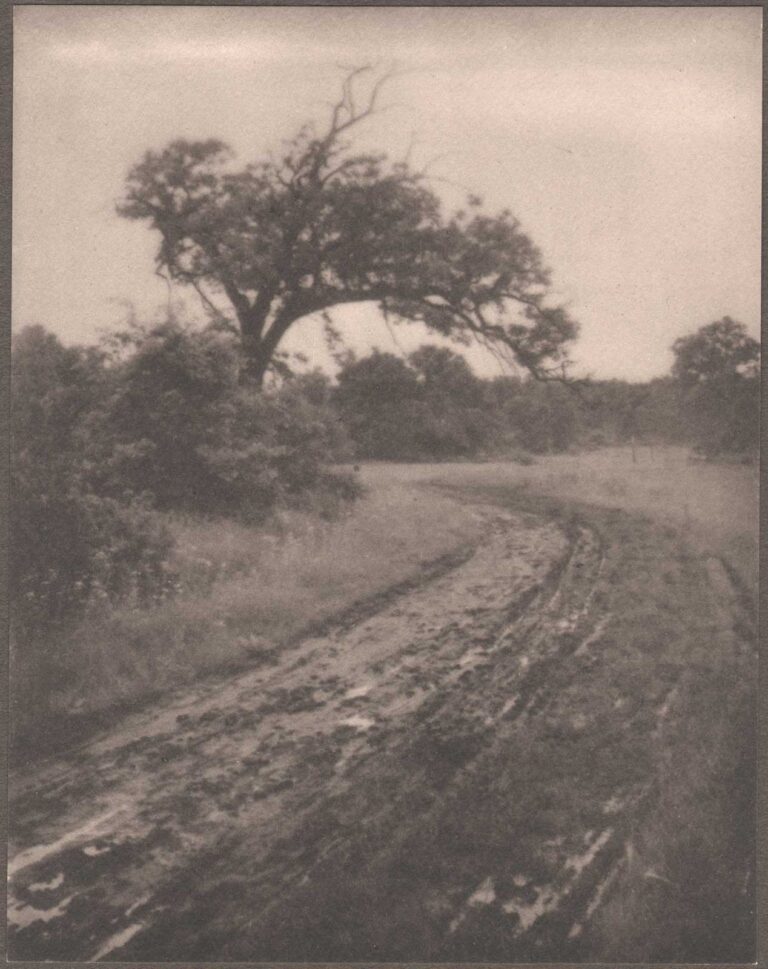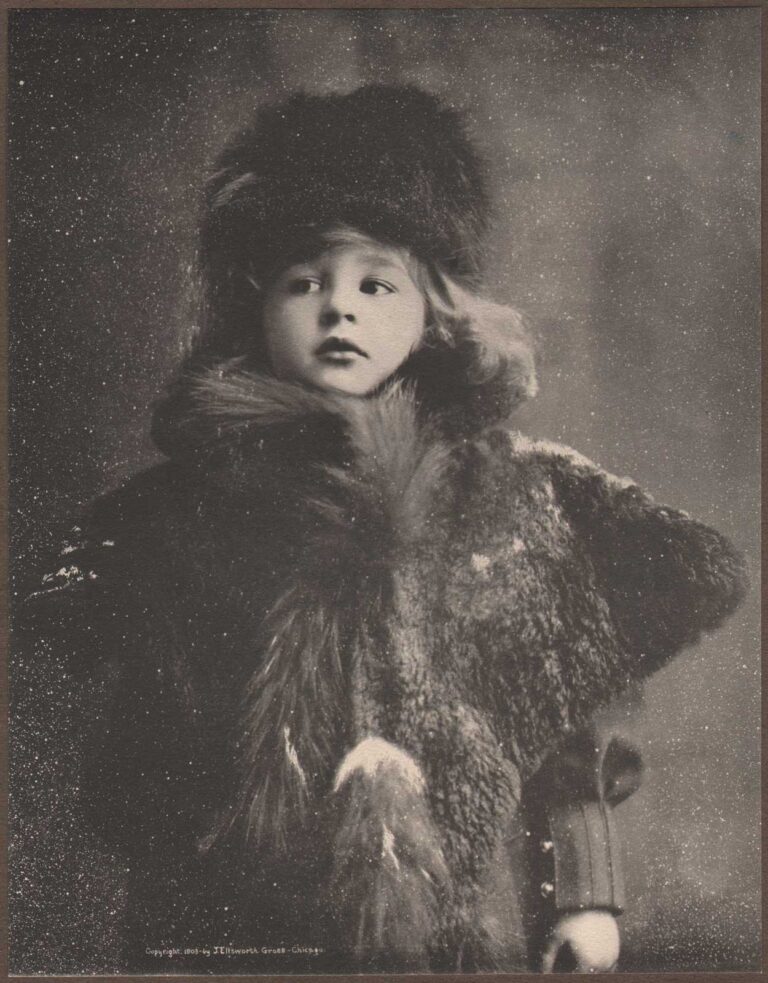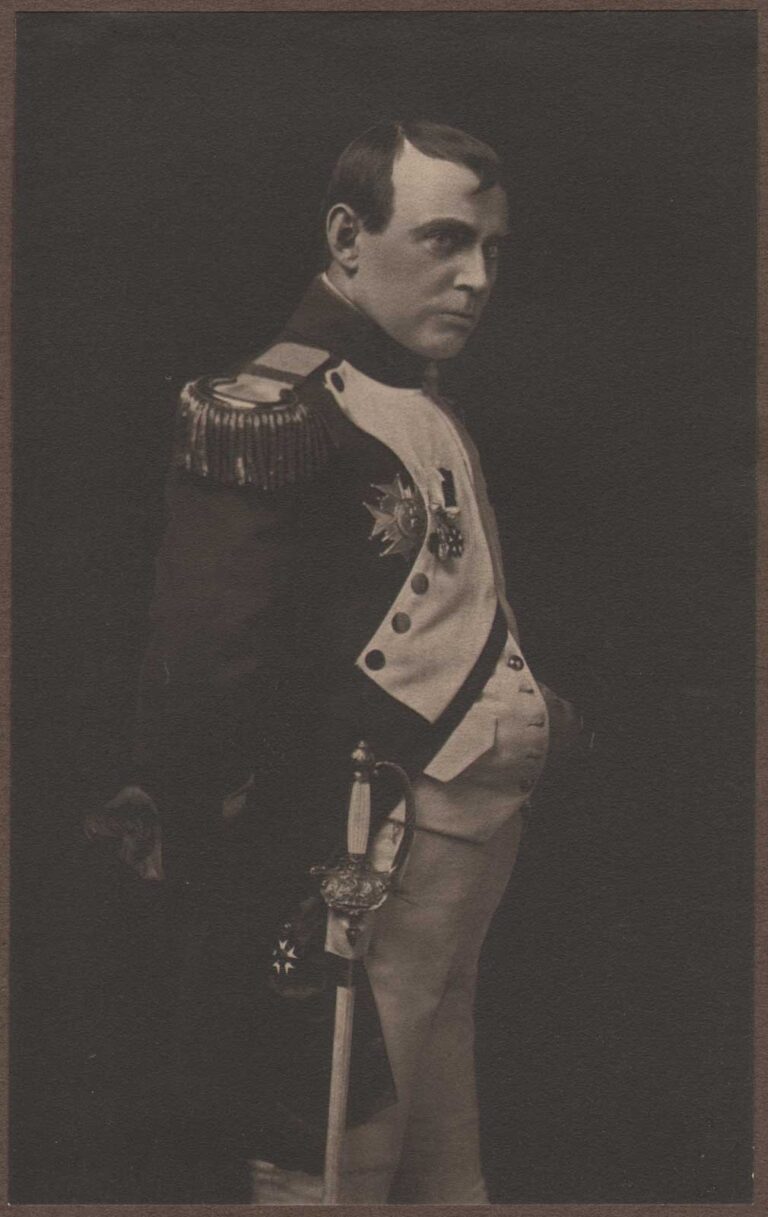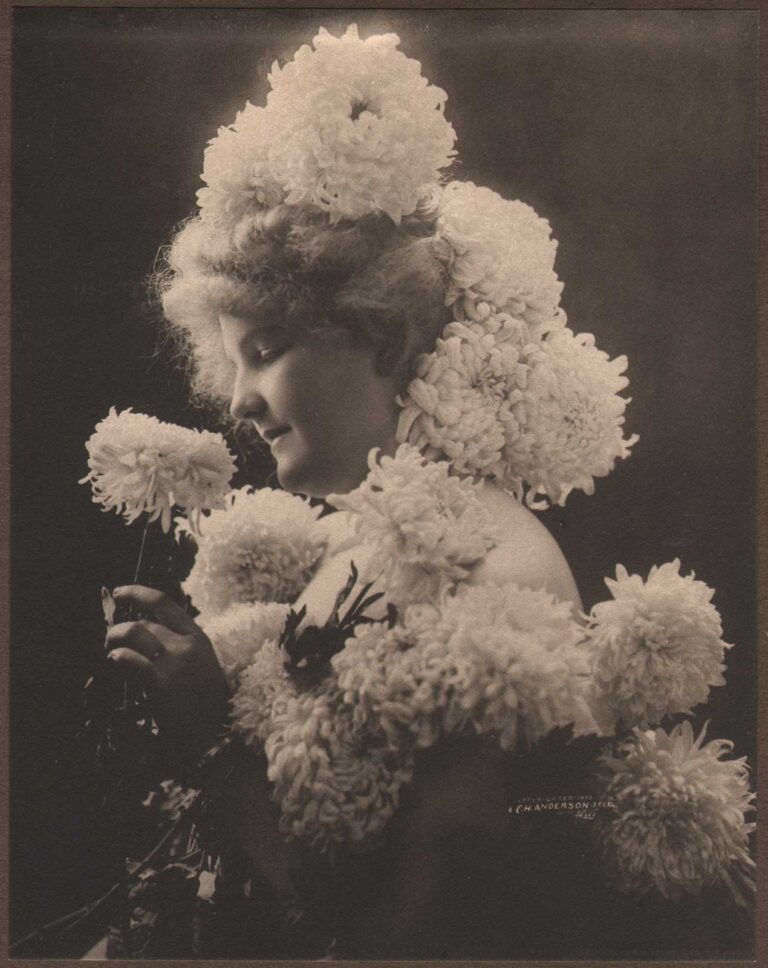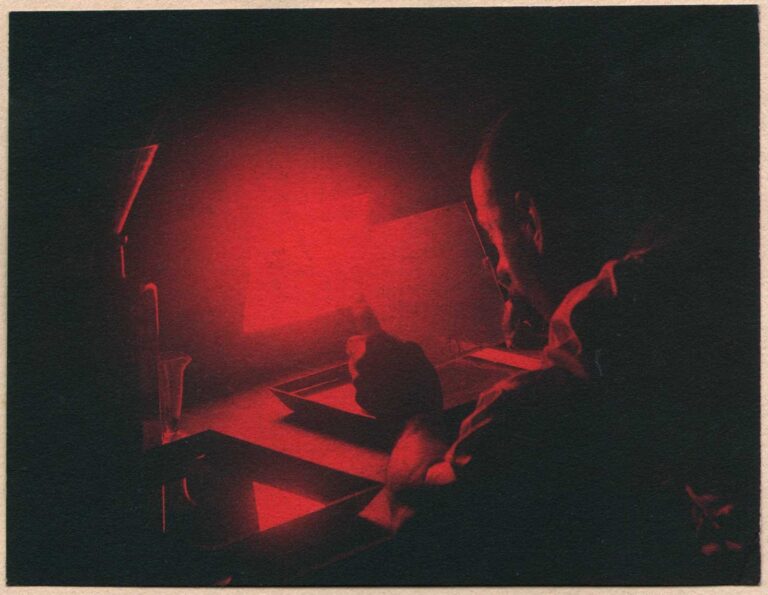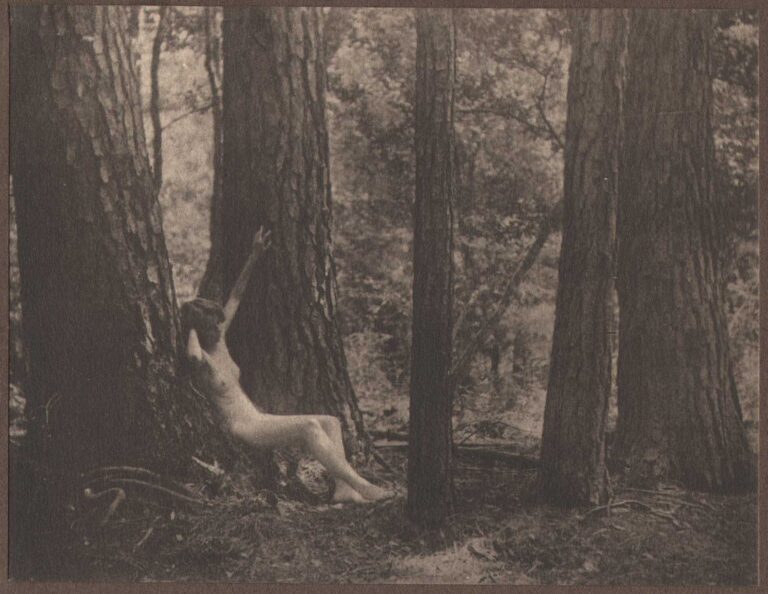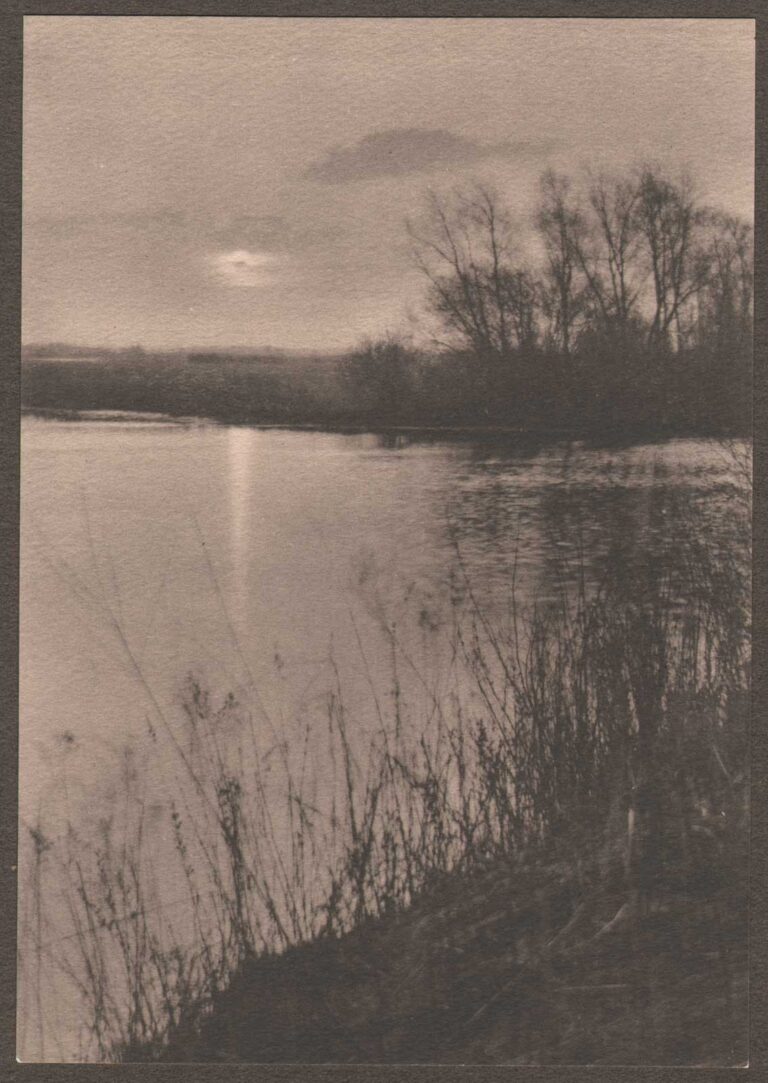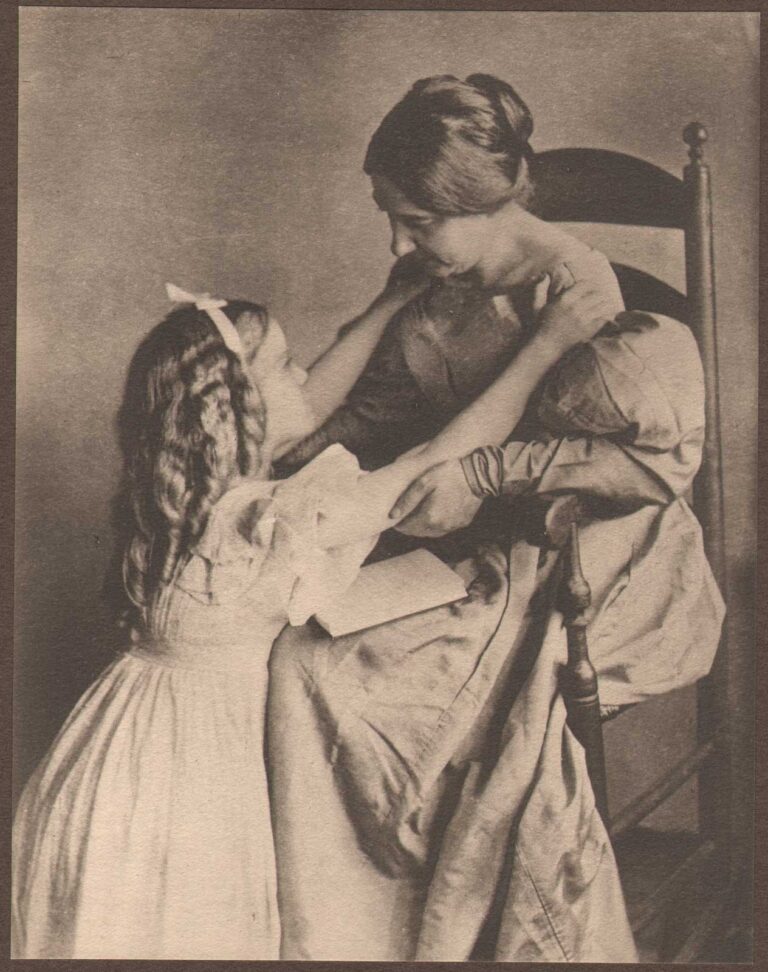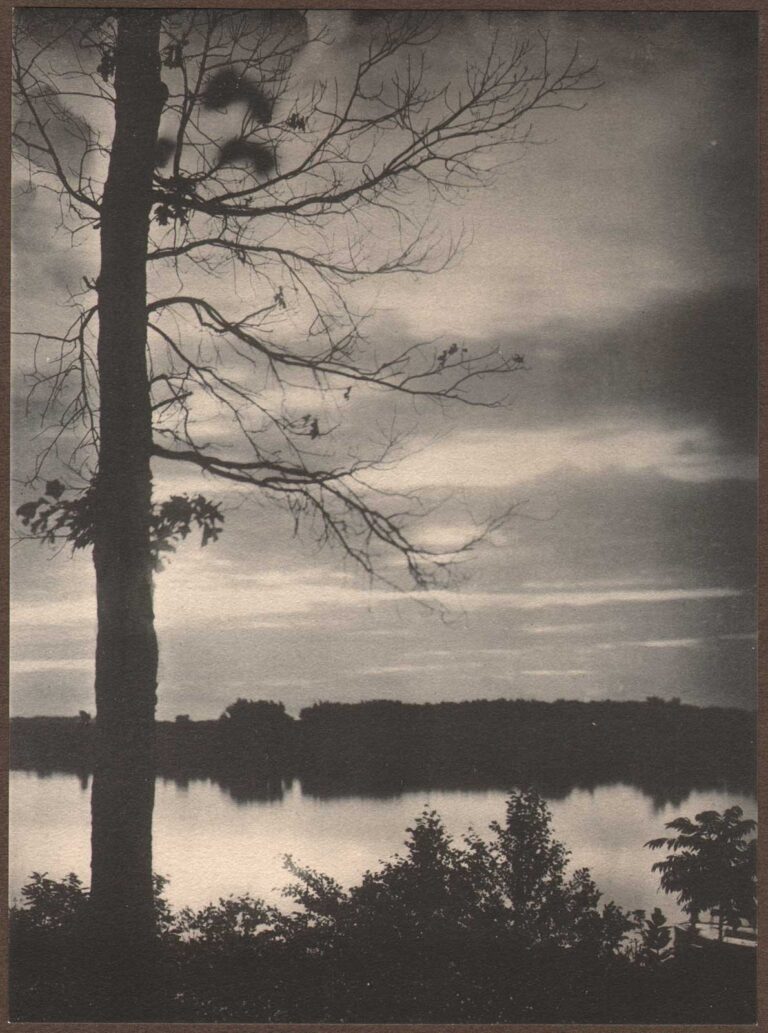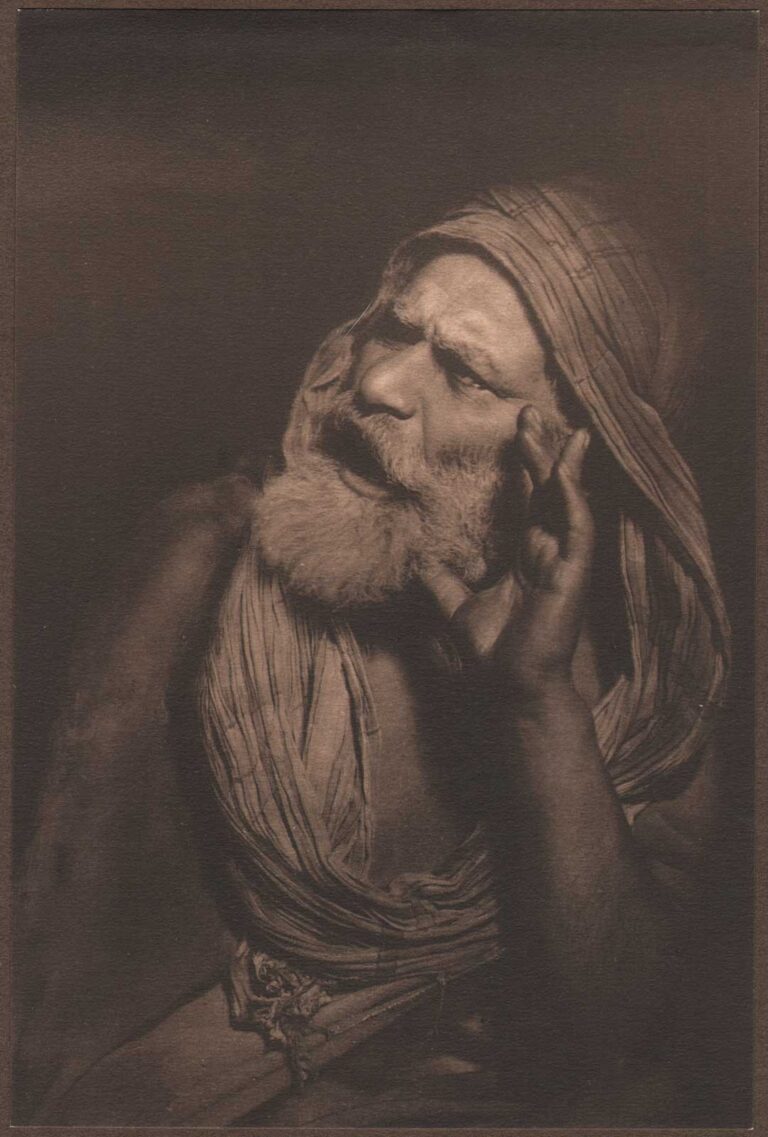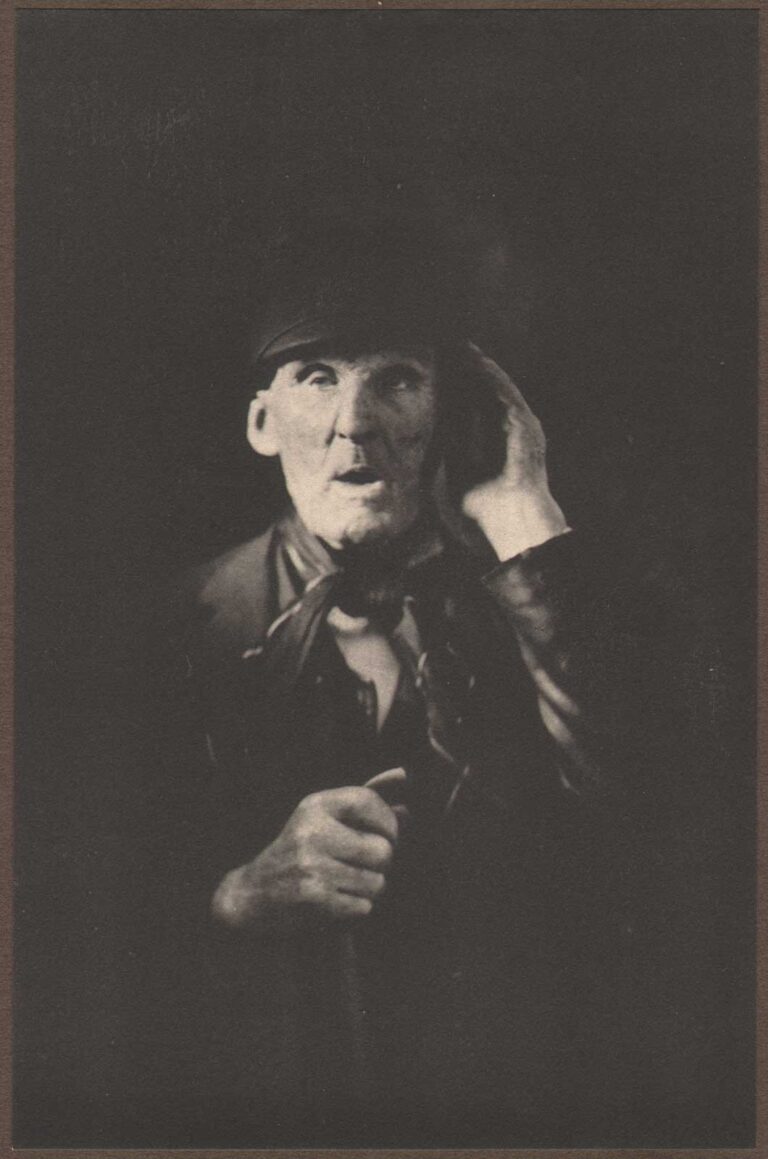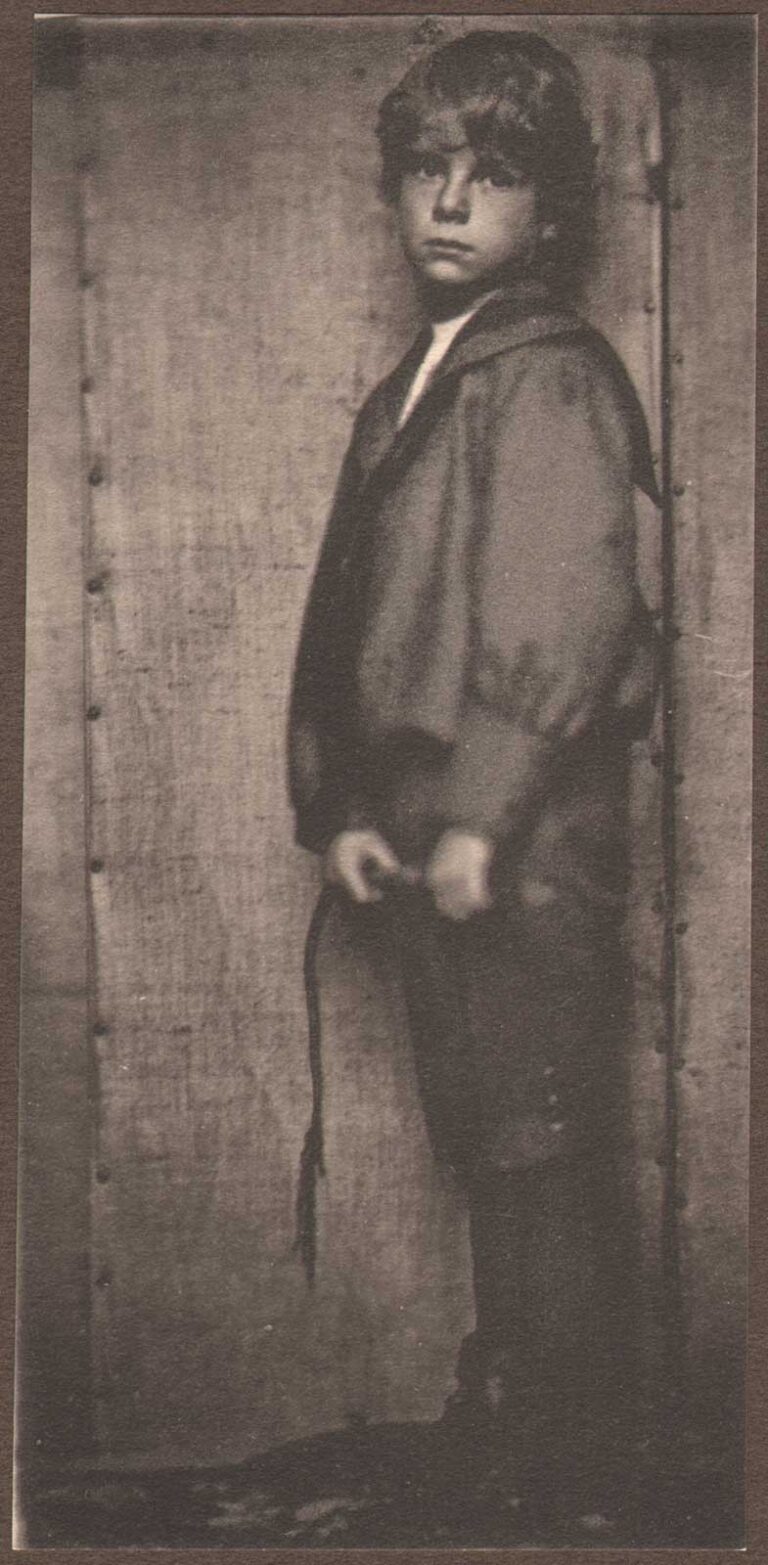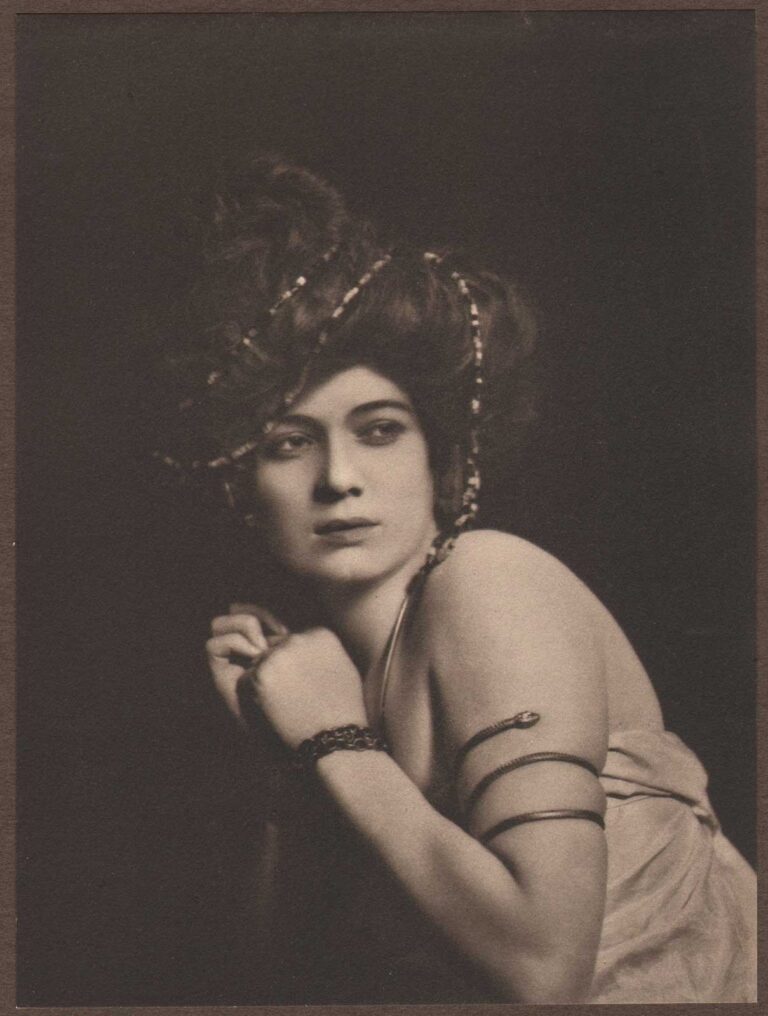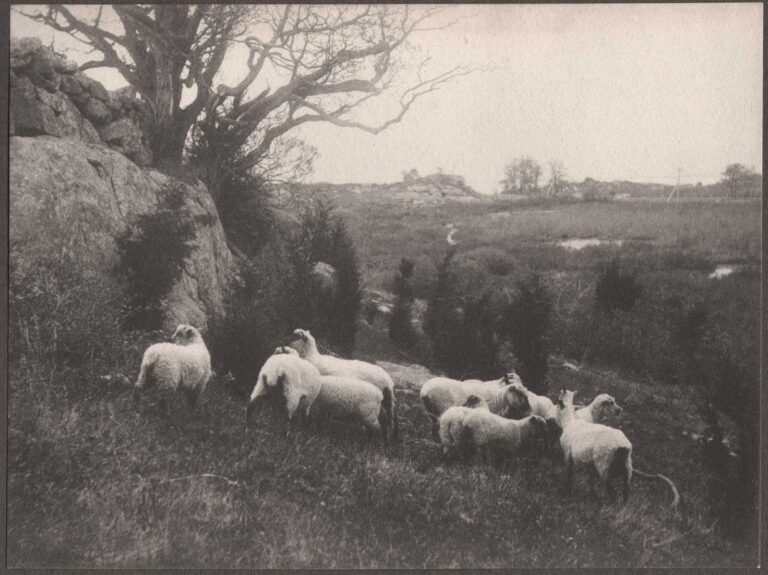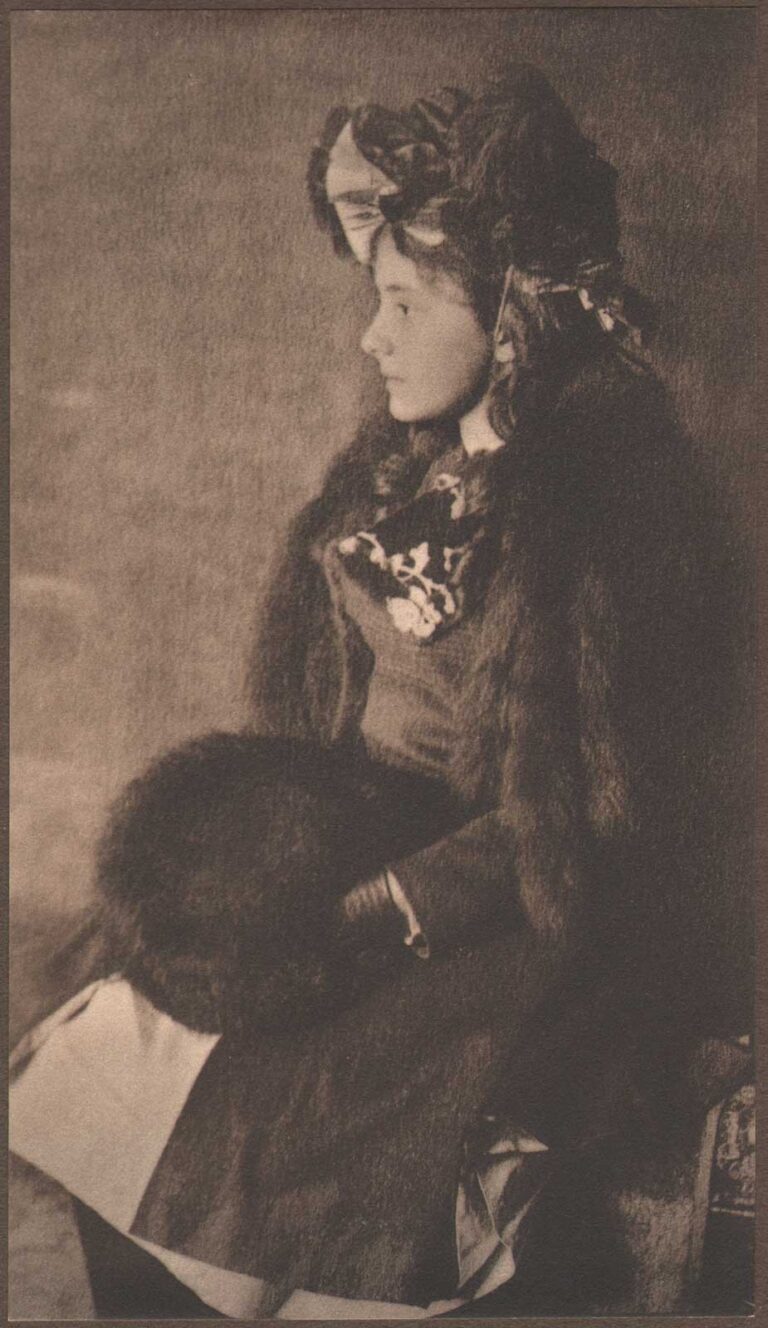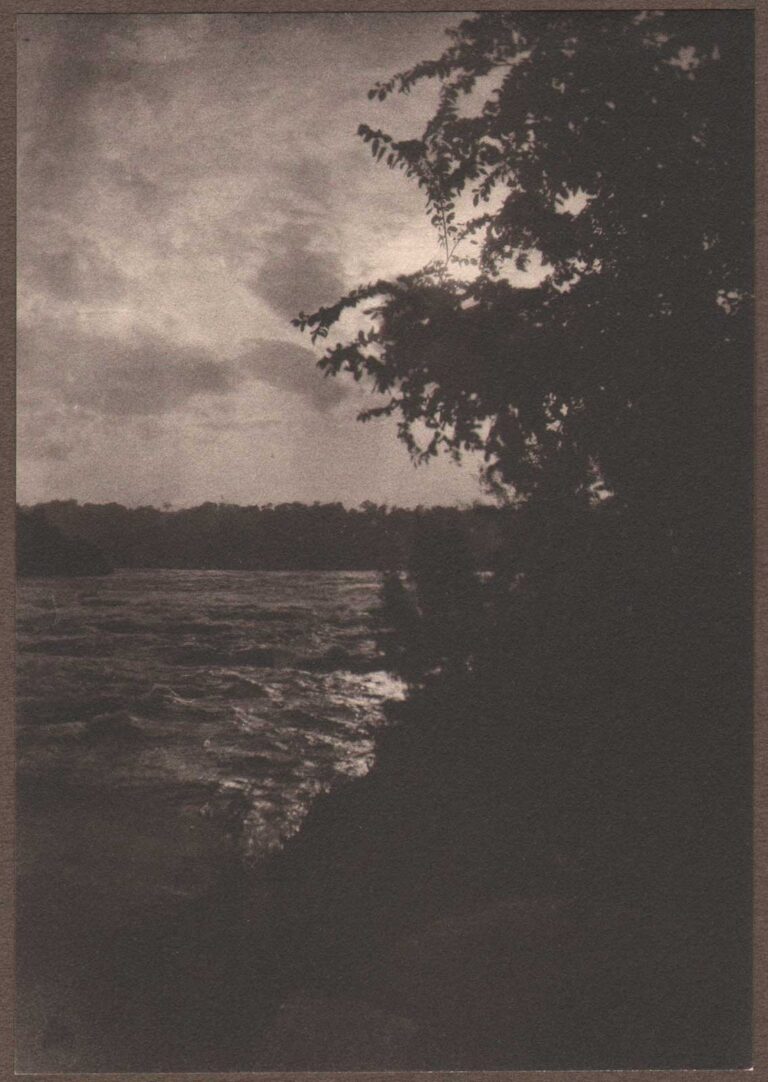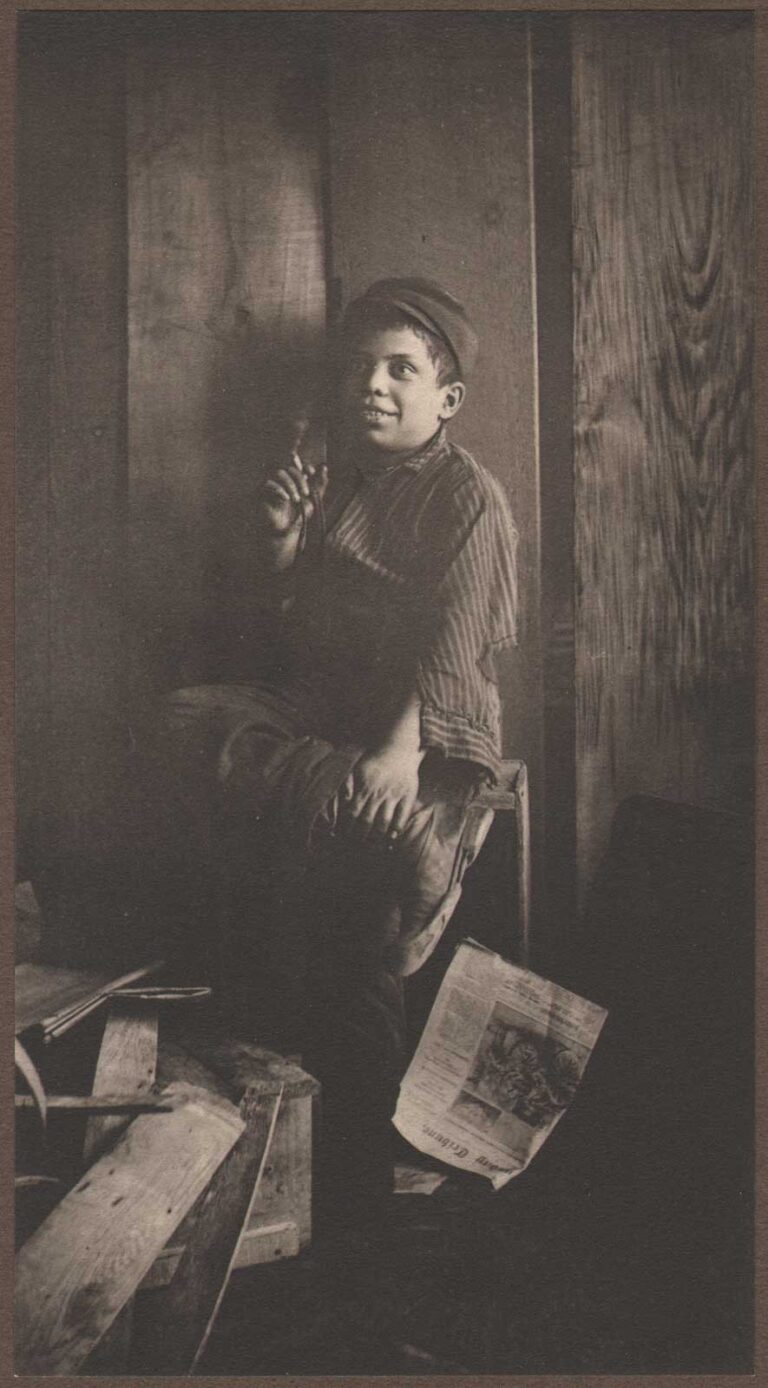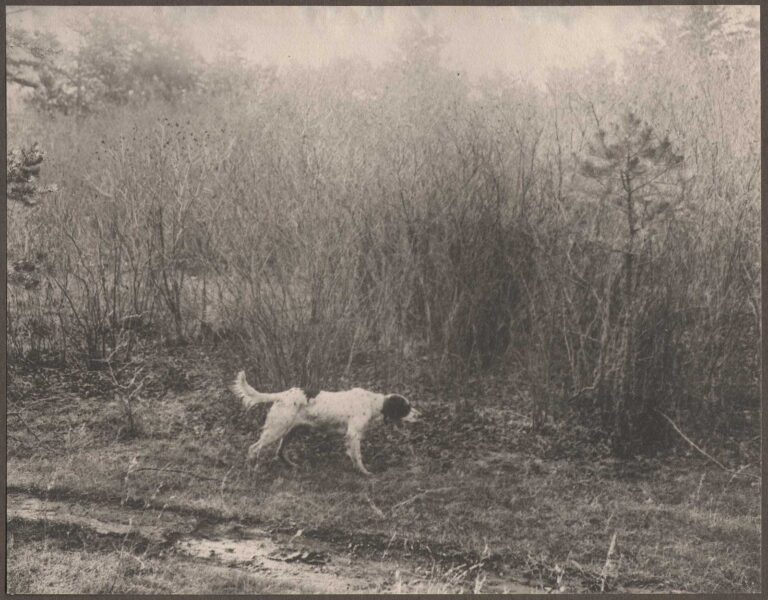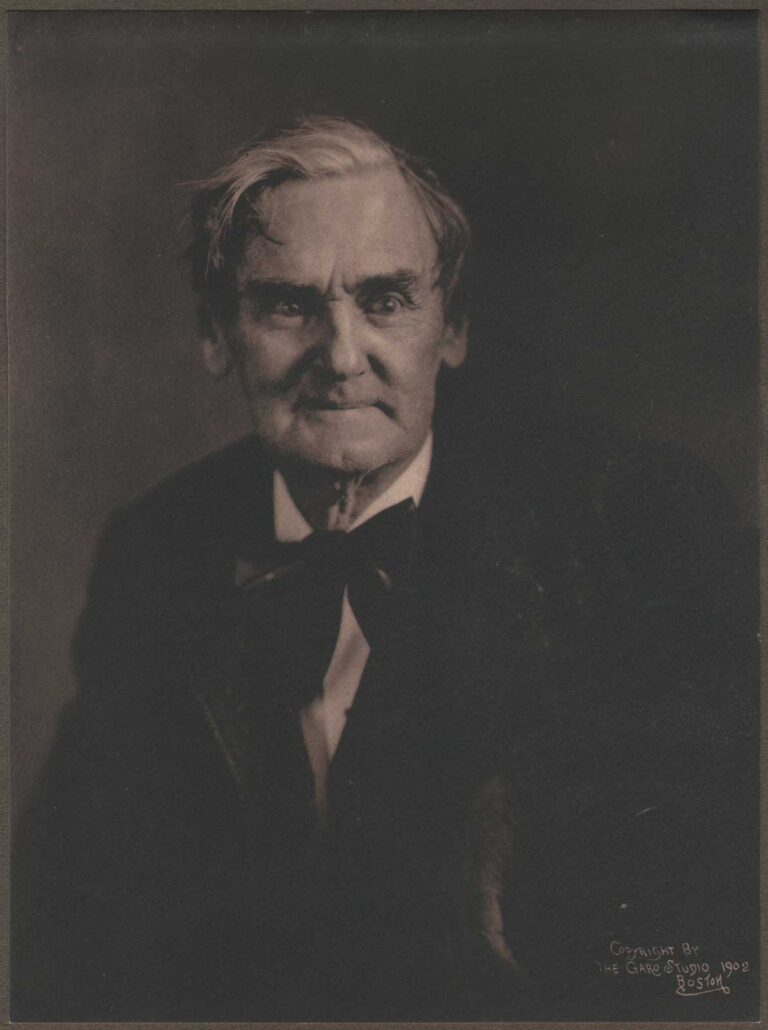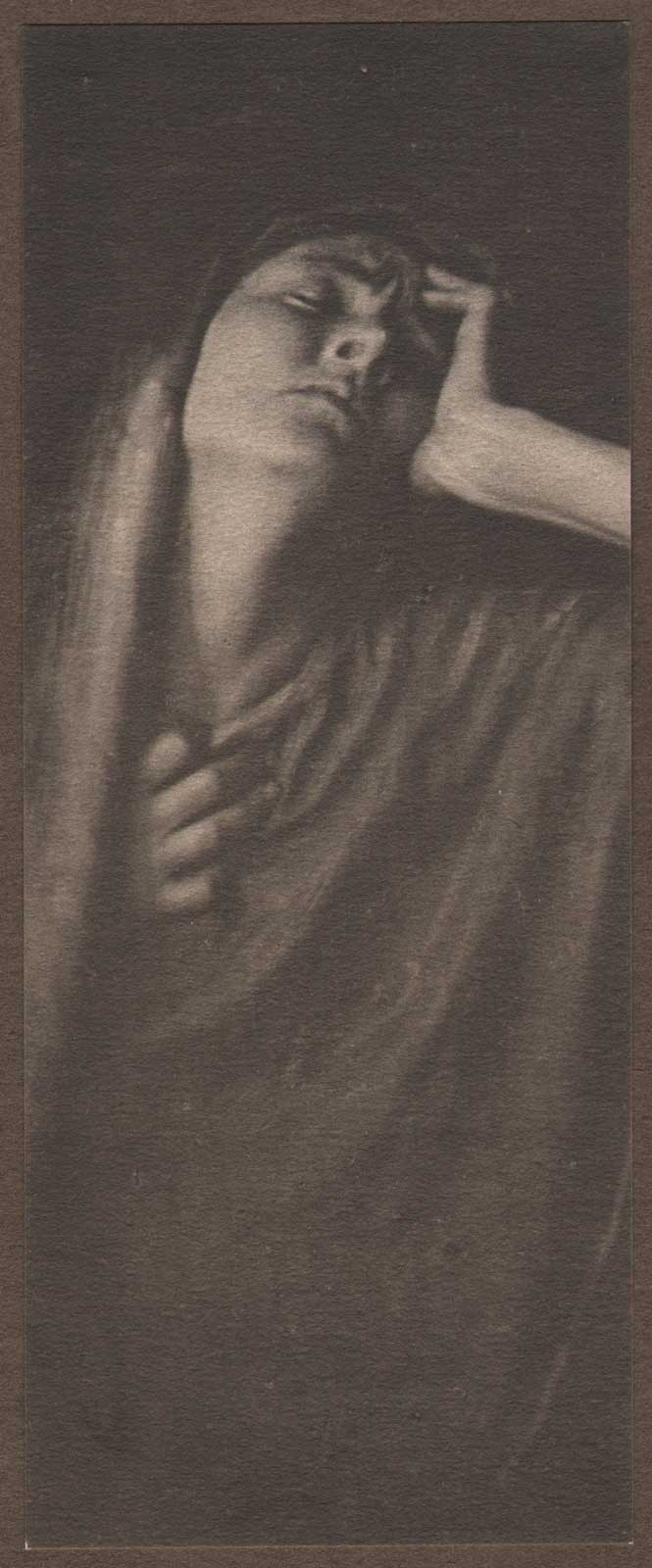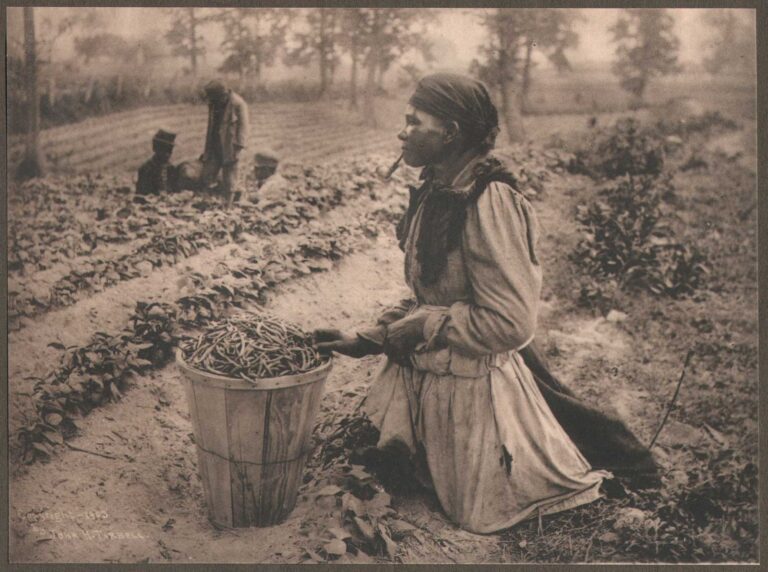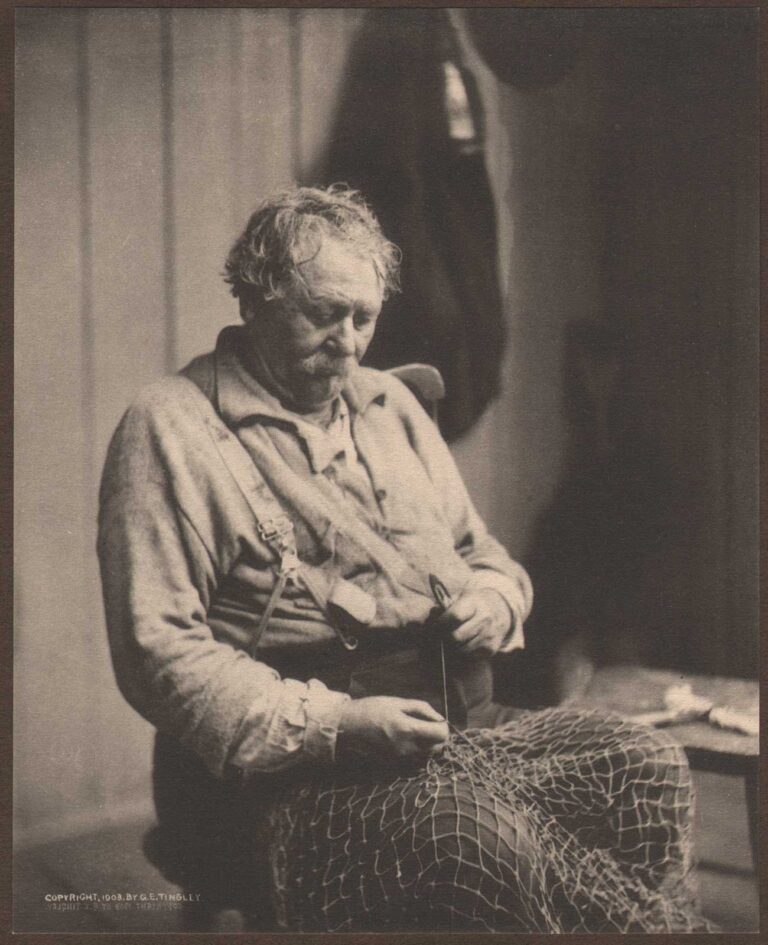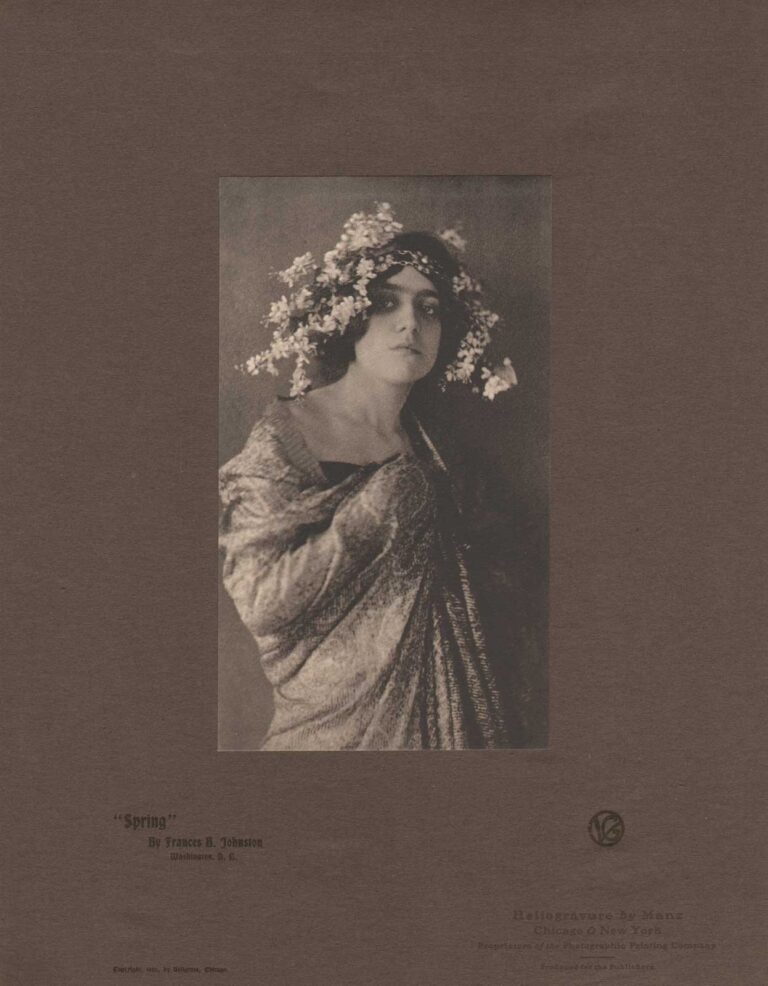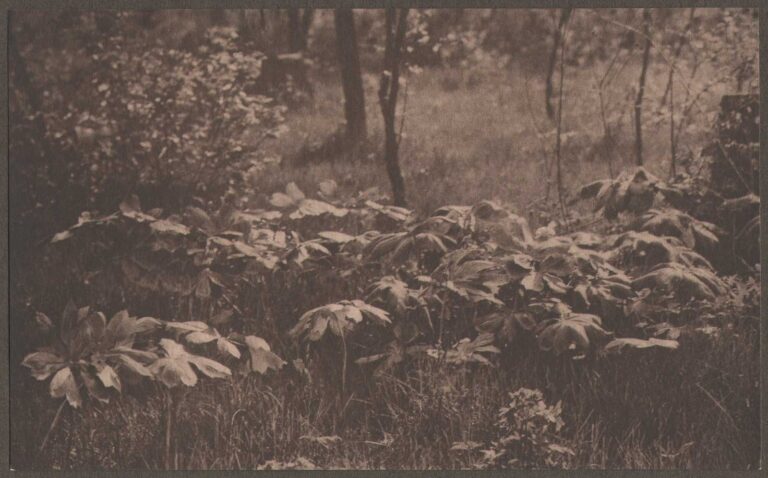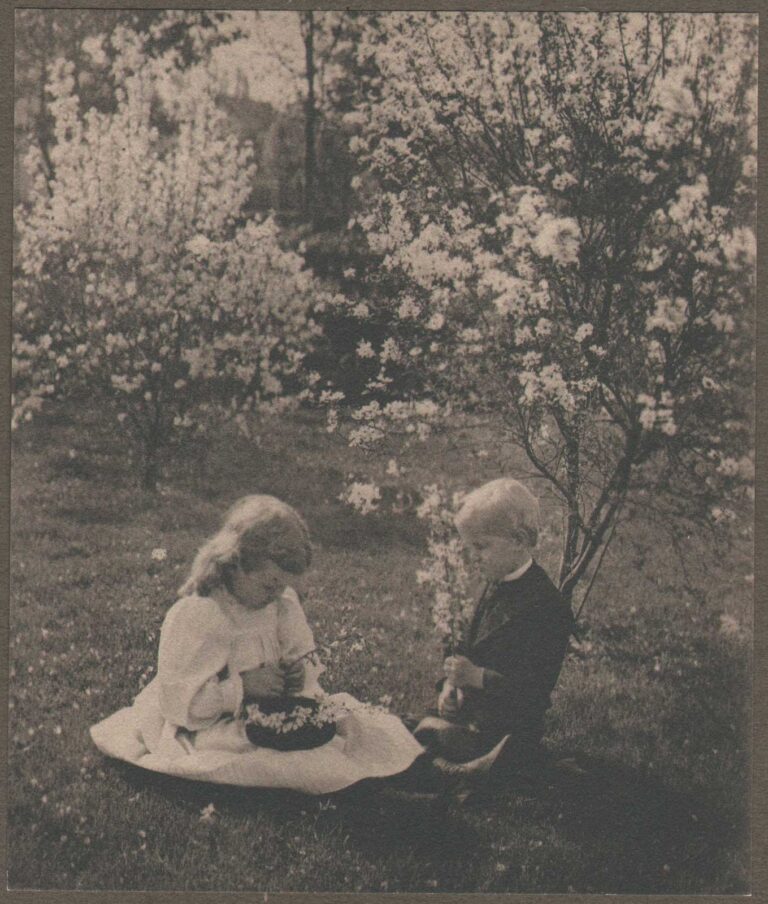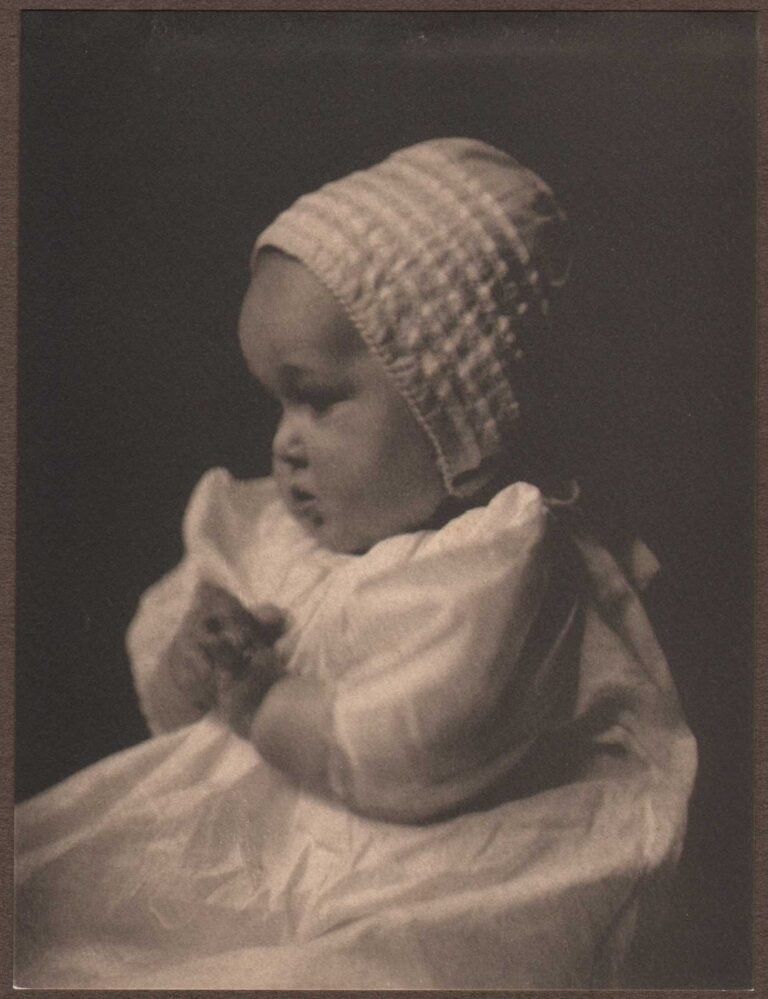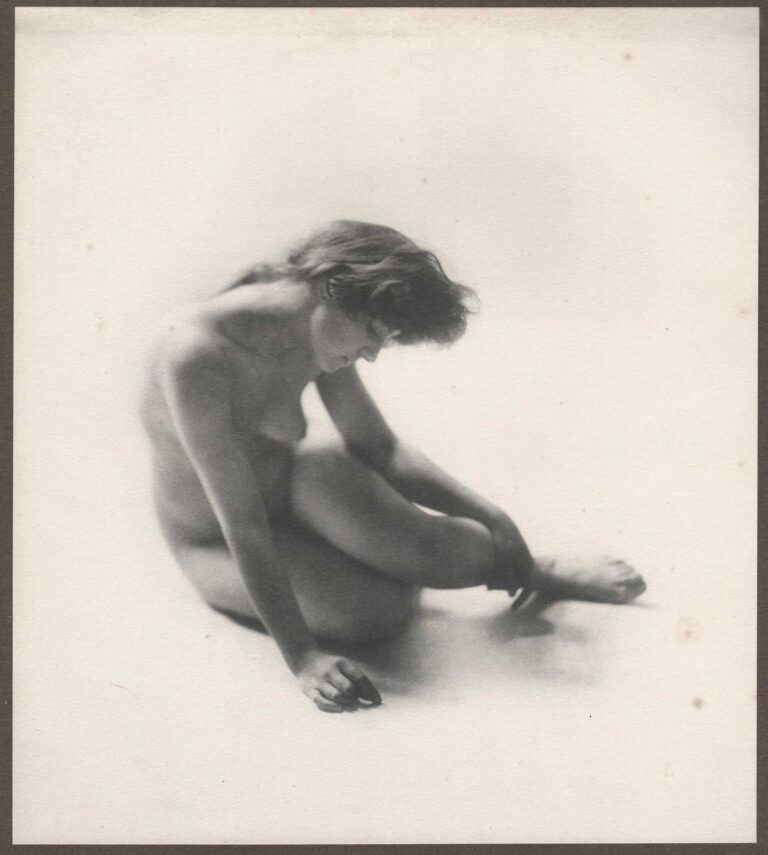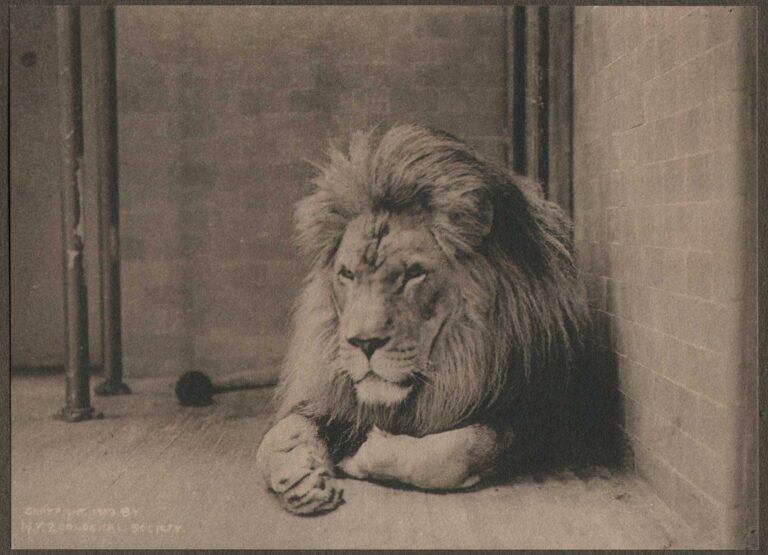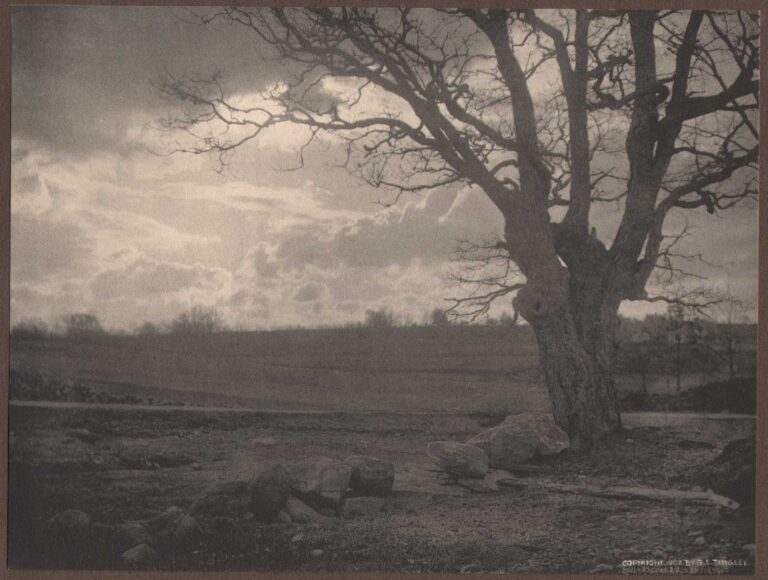
The Vollgros Collection of Masterpieces of American Photographs
Lacking one plate: A Modern Crusader by Ed Waters, Chicago.
The Vollgros Collection of Masterpieces of American Photographs
Published late in 1903, (Library of Congress Copyright Office) the Vollgros Collection of Masterpieces of American Photographs is a rare portfolio of 40 mounted photographs advertised as being printed in heliogravure, also known as photogravure. The work is intended as a manifesto of sorts promoting the new school of American photography as penned by Darius Cobb, (1834-1919) a well-known American painter and critic, which appears on the inside back cover to the internal folio wrapper:
WE HAVE an incentive for studying earnestly the higher phases of photography in the fact that our country is as old in this art as Europe, which cannot be said of painting; hence we can form here a school in which foreigners may learn of us, as now in painting we learn of them. There is no reason why America cannot lead the world in this art, which demands such a rare knowledge of the elements of science and aesthetics. With his vigorous, aggressive and inventive mind the American will place himself in his art far above the aesthetic pretense that belittles the other fine arts, and he will raise this art above the reach of the dilettanti who parade works in painting which in manner and designs are but imitations of masters’ works. –Darius Cobb
Portfolio Particulars
Indicating a shared personal and professional respect for one another, the”Vollgros” name on the portfolio is derived from the combined and abbreviated surnames of two men at separate Chicago ateliers: the engraver P.F. Volland, (Paul Frederick Volland: 1875-1919) then with the Photographic Printing Co. of Chicago, and J. Ellsworth Gross: (James Ellsworth Gross: 1862-1933) who billed himself as a “Photographer to Advertisers” and the first president of the Chicago Advertising Club.
Each mounted plate consists of a printed photograph done on wove paper, trimmed, and tipped to a larger brown art paper mount. Pictorialist in spirit, all of the plates are by Americans as spelled out in the title of the portfolio, with a few done by the now well-known pictorial photographers Annie Brigman of California and Frances Benjamin Johnston of Washington, D.C.. The purpose and intent of the work, other than providing artistic evidence for Cobb’s “manifesto” reported earlier, seems to have been to assemble a strong accounting nationally of some of the better known, mostly amateur photographers working around the very turn of the 20th Century. To wit, the publisher excerpts the final paragraph from Cobb’s article: “The Aesthetic of Photography“, which originally appeared in the January, 1899 issue of the Photo Era magazine, (uncredited) printing it on the frontis cover page to the folio wrapper:
“Let not the photography of America be divided into small schools, but let there be a grand national school, embracing the inventive and aesthetic powers which are already placing our country in the van.”
Exceedingly rare, with only one other incomplete copy known by this archive to have come up for auction in the last 20 years, (1.) the portfolio was intended to unify the two separate movements then in practice: the pictorialist school photographers and the more “straight” (deeper focus) shooters then competing for the greater public’s acceptance.
Not coincidentally, the Vollgros Collection appeared the same year, 1903, that Alfred Stieglitz published his first issue of Camera Work magazine, the premiere American showcase for pictorialism with an international reach. (2.) In keeping current with this fledgling journal, which made a point of publishing detailed information on the specific printing parameters of the individual gravure plates with each issue, the Vollgros Collection made a point to include the following information on the frontis plate page in order to give it a similar credibility to the Stieglitz publication- implying the Vollgros plates were essentially original photographs and thus equal in stature to those found in the New York journal:
Heliogravure prints produced from the original negatives with printers ink under the supervision of P.F. Volland of Photographic Printing Co., Chicago. (Copyright, 1903, by Vollgros)
The following additionally appears on the frontis to the portfolio indicating how the overall work was assembled and printed:
Done into form at the Craftshop of
J. ELLSWORTH GROSS
3600 Michigan Boulevard
Chicago, U.S.A.
Of further interest is the individual plates are given credit to “Manz of Chicago & New York“, overprinted in gold ink on the lower right margin of the brown art paper primary plate supports. Jacob Manz, (1837-1916) who was born in Zurich, Switzerland, was a wood engraver who immigrated to Chicago in 1855, and went on to found the J. Manz Engraving Company there in 1866. This firm was also the proprietor (owner) of the Photographic Printing Company, of which P.F. Volland was employed. This would appear to be a courtesy to the larger firm, as Volland is given due credit to having been involved directly with the production of the plates. The Manz credit appears as follows and is overprinted in the lower right corner of all of the plate supports:
Heliogravure by Manz
Chicago & New York
Proprietors of the Photographic Printing Company
———
Produced for the Publishers
Notes:
1. 2006 by Richard Moore Photo. (31 plates extant) Besides containing the Brigman and Johnston plates, his auction description notes for the portfolio: “Most of the rest of the photographers were published in the American Annual of Photography, a leading pictorialist publication of the period. Christian Peterson’s Index of the American Annual of Photography lists 11 of the photographers present in this portfolio.” Moore additionally states he believed the majority of the plates to be printed in collotype versus photogravure, although PhotoSeed has decided to list them as gravures as they are advertised as such and individual plate magnification with a lupe seems to bear this out for the most part.
2. A fascinating parallel between Camera Work and the Vollgros portfolio is reported in the pages of The Photographic Journal for the Royal Photographic Society. The Torbay Camera Society reports a donation in the May, 1906 issue: “The President announced that the following gifts had been received by the Society:-
A Complete set of “Camera Work.”
Presented by Alfred Stieglitz, Hon. F.R.P.S.
The Vollgros Collection of Masterpieces of American Photographs.
Presented by Ellsworth Gross, Esq. (p. 182)
